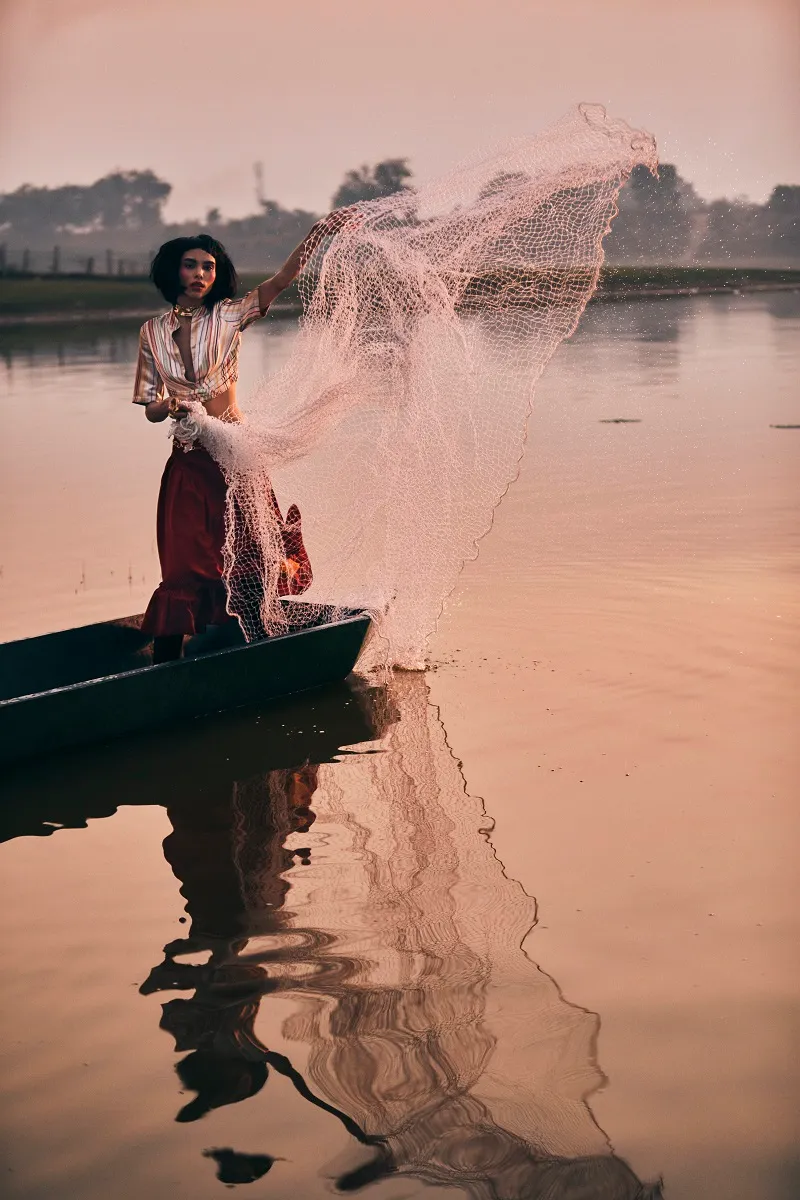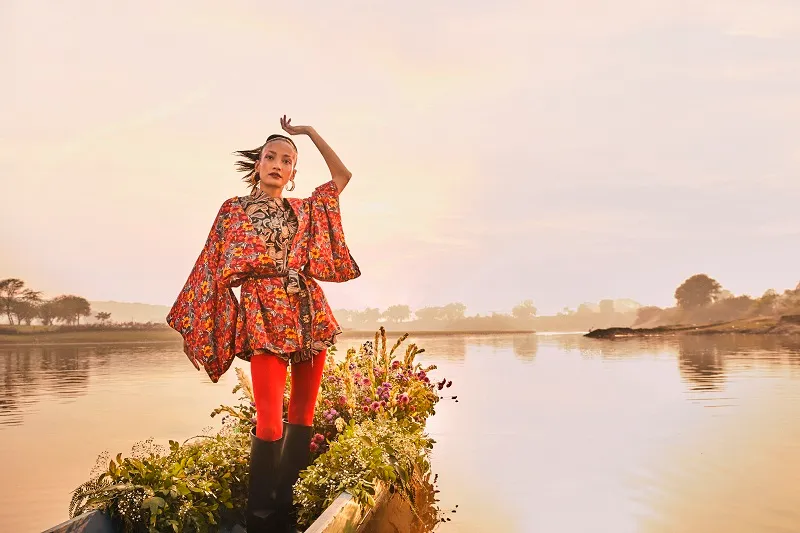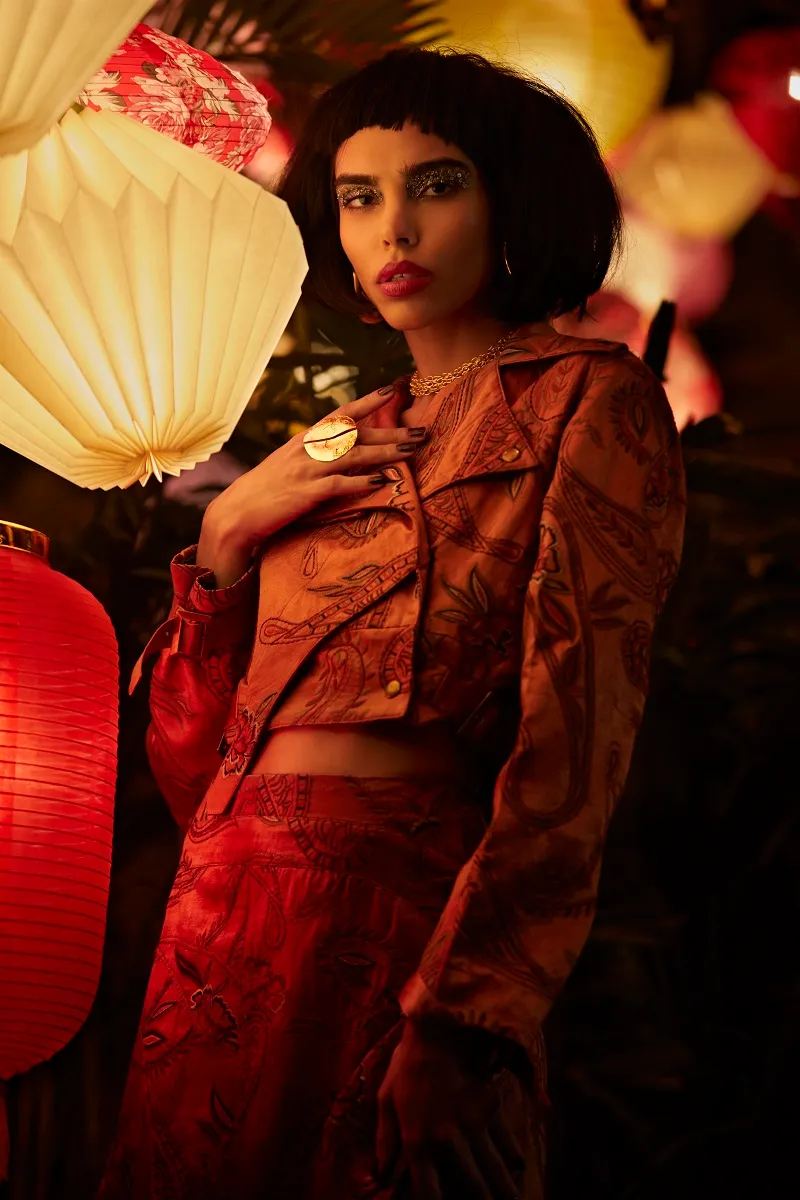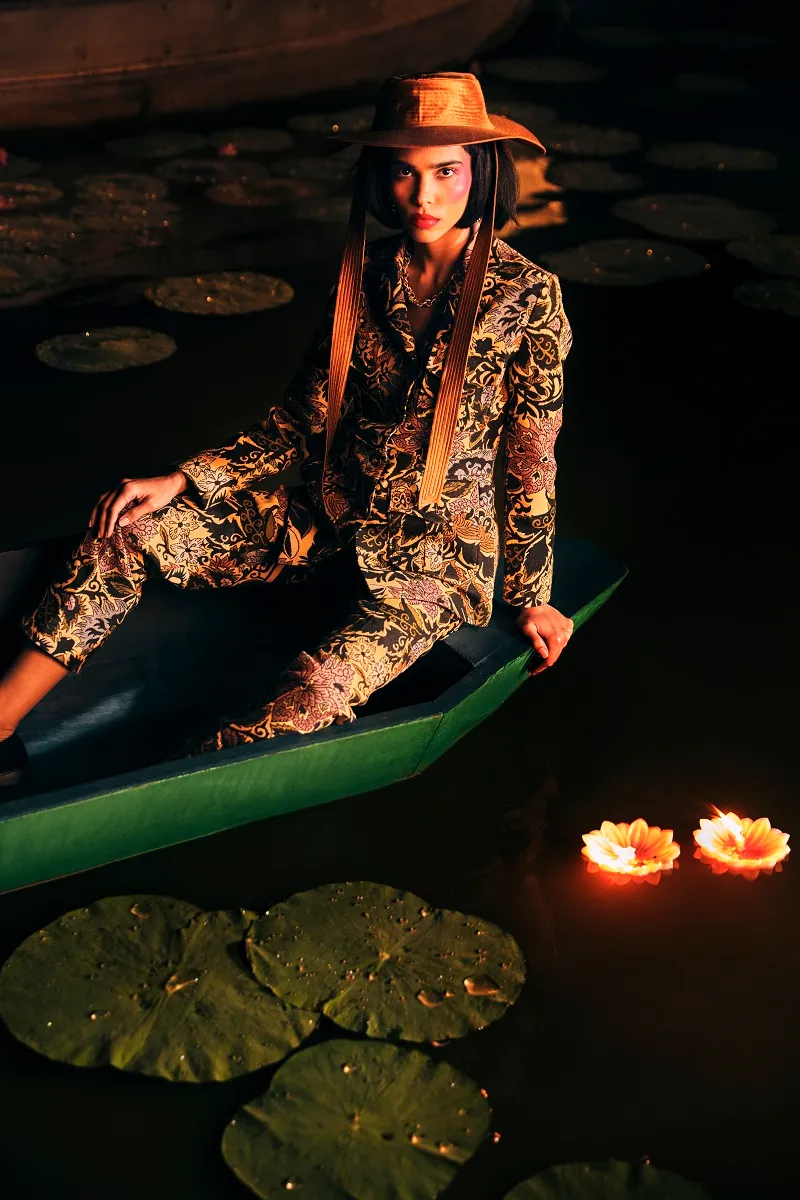By local artisans for the world: Why NYC brand Là Fuori is betting on slow fashion
Founded in 2019, New York-based lifestyle brand Là Fuori is committed to the enhancement, inclusion, and safeguarding of artisan cultures.
How often do you check who makes the clothes you wear? A trip to the mall usually means picking up whatever is new on the shelves, without really caring about the carbon footprint, or even knowing if the people making the garment is getting proper wages — garments we often end up spending a fortune on.
In 2019, Indian designer Vidur Adlakha and Italian designer Riccardo Benedini launched Là Fuori, a New York-based lifestyle brand to create a community of nomadic and creative individuals, committed to the enhancement, inclusion, and safeguarding of artisan cultures.
Là Fuori, which is Italian for ‘out there’, is visualised to create clothing that intertwines the connection of the community with the artisan or creators’ hands.

A chance meet-up
An alum of NIFT Mumbai and later, FIT New York, Vidur would spend a significant amount of time in China, due to his work. “I crossed paths with the reality of products manufactured in prisons at negligible costs and of wholesalers who made huge margins,” he tells YS Weekender.
Between guilt for being a part of that system and the desire to change at least some gears of the mechanism, he decided to build a scalable business in the world of luxury and fashion, while designing for brands. However, Vidur regrets not being able to wear even one of the garments he created himself due to sizing issues.
“I had the right to create and dress others but not to adorn myself with what I loved most. I have always felt excluded. So, I started making custom shirts and dresses myself and I decided to create an all-inclusive brand in which all sizes, shapes, and colors were welcomed. Following a trip to Italy that taught and inspired me so much, the idea of Là Fuori was born as an expression of my curiosity and my unconditional love for art and the textile world,” he says.

Vidur Adlakha
Riccardo, on the other hand, grew up in Verona. After obtaining a law degree, he organised events for Go-Pro, post which he started dealing with the sale of ancient and modern objects, mostly restored from buildings.
“I grew up playing in the attics and cellars of my grandparents' houses, and in the countryside at the foot of the hills of northern Italy. I loved rummaging through trunks and furniture covered with dust, imagining adventures, and writing my first poems,” Riccardo says.
For three years, he lived with his family on a yacht in the heart of Venice.
“We hosted people from across the world and I gradually understood that in reality, the real journey lies in people’s eyes,” he adds. This consideration prompted Riccardo to leave the safe harbour and go in search of new stories.

Riccardo Benedini
In August 2019, the two met in New York. Vidur wanted Riccardo to embark on an experiential journey, asking him to tell — through his photos and poetry — the stories of the fabrics that they would encounter on their path.
Thus, the duo co-founded Là Fuori. While Vidur is a lover of all things art and design, Riccardo’s passion lies in architecture and ancient artefacts.
Vidur explains, “Là Fuori uses the magic of its garments to tell the extraordinary stories of the artisan communities around the world.”

A design by La Fuori
Brand of the world
While founded in New York, the founders would like to believe that their brand is a globetrotter.
Là Fuori is headquartered in Manhattan, with a communications office in northern Italy, near Venice. About 30 percent of each of the brand’s collections are made in artisan villages around the world, while the remaining 70 percent of production is made in a workshop that the brand owns in New Delhi.
It creates collections inspired by different textile cultures. Once a rough itinerary has been outlined, the duo leaves for travel, allowing the journey itself to inspire them. “What is really important for us is to keep this path, through the different cultures, authentic and real,” Riccardo says.

30 percent of every La Fuori garment is made in artisan villages
Each garment of the brand is 100 percent handmade — it is sewn, embellished, and then given a touch of couture finish.
“For our special pieces, we use handcrafted fabrics, and for each collection, we develop customised prints and patterns, in collaboration with artists from different countries. Even for sizes, we cater to customers of all shapes and beauties, always keeping ourselves open to experimentation," adds Vidur.
Seeking inspiration from the authentic
Là Fuori has launched two collections so far, each consisting of about 40 different outfits. The brand made its Italian debut with the collection Road to Barmer. “It was inspired by the homonymous town in Rajasthan...a result of the journey led by two young creatives in the land of colours, and in direct contact with the local artisan communities,” Vidur explains.
Road to Barmer is a collection dedicated to women who create and are a source of inspiration to the two founders. It was presented on the Giudecca Island in Venice, under the palm trees of the garden of the Atelier dei Daragiati Farinelli on the occasion of the Venice Film Festival.

The duo describes the collection as — “Suggestive ruins brought back to their ancient splendour, the revolt that invokes the colours, fortresses marked by battles, breathtaking sand dunes, elegant beauty and pride.”
It’s latest Stories of Sapa explores innovative textures on Vietnamese inflorescence, blending the art of hand-weaving organic silk with a palette of vibrant colors, inspired by the heights of the Sapa plateau.
Targeting the luxury sustainable fashion industry, which is expected to reach $9.81 billion by 2025, each of Là Fuori’s pieces are priced between $250 (approx. Rs 18,000) and $600 (approx. Rs 45,000).
Giving back to the community
Là Fuori is committed to producing 30 percent of each collection directly from the source of inspiration, which means in close contact with the community of artisans and artists. The brand shares 10 percent of its profits directly with the weavers, embroidered and all the people it collaborated with.
“The distribution of profits is in addition to the salaries for the creation of our products,” Riccardo explains. The brand claims to pay 20 percent higher than the regular wage rate to its artisans.
Finally, it directly distributes the remuneration to the artisans, and documents the entire process of exchange and growth that takes shape from a particular project on the web and social media.
Là Fuori claims all its materials are sustainable — the fabrics are custom-made from organic fibres, such as yarn sourced and locally manufactured by artisans or under their guidance; and are always combined with ecological prints and colours.

Furthermore, no polyester and non-biodegradable products are used. The trims and accessories are sourced locally from markets of New Delhi and Mumbai. Additionally, the packaging is also sustainable and reusable, in order to reduce water and environmental pollution.
Vidur says, “Each dress symbolises the encounter between the woman who makes it and the one who wears it; restoring dignity and strength to that female creativity that is too often discriminated against in the world.”
Là Fuori is now focusing on launching a home and interior segment, also planning to create a men’s wear line in the future.
“We believe in slow, meaningful fashion; therefore, we hope to see more people adapt to sustainable textiles, appreciate handmade craftsmanship over fast fashion and mass produced clothing,” Vidur says.
Edited by Saheli Sen Gupta








![[2020 Outlook] Top health and fitness trends to get you in the best shape](https://images.yourstory.com/cs/7/a054f1302d6c11e9aa979329348d4c3e/07-1578030699845.png?mode=crop&crop=faces&ar=1%3A1&format=auto&w=1920&q=75)
